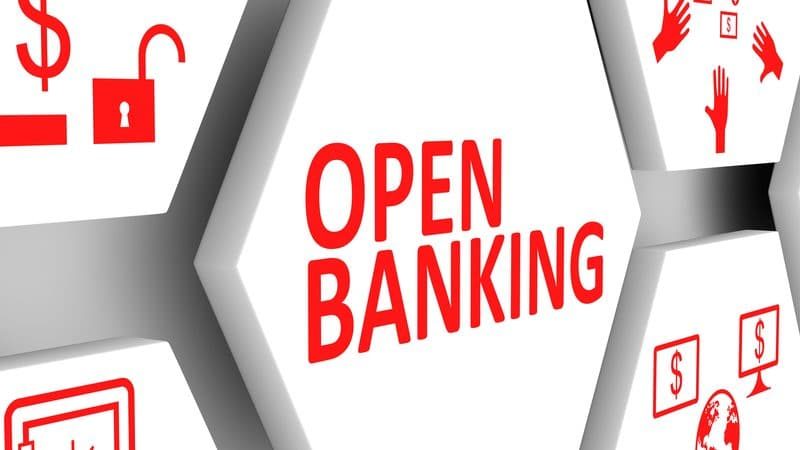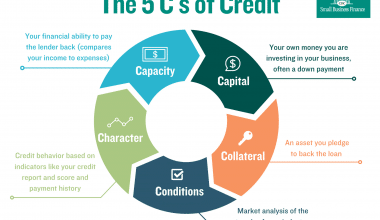Banks keep track of a lot of what we spend, save, and borrow, from power bills and mortgage payments to our weekly gas and coffee purchases. Some of that customer data is now being shared with third parties as part of a global movement known as “open banking” (also known as “open financial data”). It’s been in the works for about a half-decade, and it’s about to unleash a tsunami of digital financial innovation. Third-party providers (TPPs) can help you save money, borrow more quickly, and pay more easily using open banking.
Regulations in the United Kingdom already require banks to work with authorized TPPs.
In the United States, several banks in open banking voluntarily make data available. This trend is expected to continue, whether or not it becomes a mandate.
Definition of Open Banking
Open banking is the technique of sharing financial information electronically, securely, and only under terms that clients agree with.
TPPs can efficiently access financial information thanks to application programming interfaces (APIs), which encourage the creation of new apps and services. In an ideal world, open banking would result in a better experience for customers.
You may already be using services that open banking would enhance. Third-party personal financial management (PFM) apps, leverage your bank account information to help you track spending and meet other objectives.
Understanding Open Banking
Under open banking, banks let third-party service providers, typically software startups and online financial service suppliers, access to and control over their customers’ personal and financial data. Customers are typically required to offer some type of agreement to the bank in order for such access to be granted, such as by clicking a box on a terms-of-service screen in an online app. APIs from third-party open banking suppliers can then access the customer’s shared data. Comparing the customer’s accounts and transaction history to a variety of financial service options, pooling data across participating financial institutions and customers to generate marketing profiles, or executing new transactions and account adjustments on the customer’s behalf are all possible uses.
Screen scraping is no longer necessary.
The initial generation of PFM apps, also known as account aggregators, required you to use the same user name and password that you use to access your bank account. The software would then be free to “screen scrape,” or select the information it required from among all the data it had at its disposal. That was inconvenient and unreliable, and it had to be redone after your bank’s website was changed. APIs, on the other hand, provide programs with direct access to certain bits of data. This may include your account balance or specific transaction details. Furthermore, you don’t need to disclose your password to anyone.
What Can Open Banking Do for You?
Open banking initiatives are significant for banks, regulators, and TPPs. In the long run, customers should have more options for managing their money, borrowing, and making payments.
#1. Pressure on Banks.
While open banking allows TPPs to gain access to bank information, banks may elect to improve the services they provide. Banks can compete with improved PFM tools and transparent, competitive pricing instead of allowing others to dictate the communications they get in ope.
#2. Additional Resources
More third-party PFM solutions are on the way. With open APIs, app developers will have an easier time assisting you in gaining control of your expenditure. They may be able to foresee occurrences in your account or recommend products that will save you money using artificial intelligence. Of course, some applications may not recommend the finest items and services. However, they may recommend those that pay referral or affiliate fees—so choose your tools cautiously.
#3. Streamlined Financing
Obtaining or refinancing a loan may become less difficult. Instead of gathering information from many sources and manually submitting it to a potential lender, consumers can allow lenders to simply grab what they need and make them a better offer.
#4. Loans for Businesses
Lenders may want to inspect your books if your small business requires a loan or a line of credit. Again, rather than you produce reports that may be inaccurate by the time lenders see them, lenders can obtain all of the information they require from your bank and accounting system.
#5. Accounting Automation
Accounting systems that are simpler and less expensive may benefit both businesses and consumers. When you send or receive payments, integrated systems can immediately update, and you may save time on tax preparation.
#6. New Payment Options
Payments are an important component of the European open banking policy. Banks must allow third-party payment initiators to commence payments on your behalf under the European Commission’s Second Payment Services Directive (PSD2). Again, this isn’t necessarily new but it will make it easy for more service providers to handle payments. Reduced payment processing expenses may also benefit businesses.
#7. Concerns About Privacy
Open banking is based on data sharing, yet you may wish to keep your information private. Fortunately, open banking should not imply a loss of security or privacy. TPPs and banks will have to take precautions to safeguard sensitive information. They will educate customers about the new risks they face.
#8. Data Exchange
When and how financial organizations can share personal data is often specified in open banking programs. Customers in the United Kingdom, for example, are required to accept information sharing with particular partners. Banks in the United States currently manage (and regulate) how you share your information, with your permission. They don’t appear keen to relinquish that power.
Any sharing you authorize places your information in the hands of someone else. Then there’s the question of how effective that TPP will be at securing your information—and what they’ll do with it.
Risks of Open Banking
Open banking may provide benefits to consumers in the form of easier access to financial data and services, as well as cost savings for financial institutions. However, it may offer serious hazards to financial privacy and the security of consumers’ finances, as well as responsibilities to financial institutions. Open banking APIs do not come without security hazards, such as the possibility of fraudulent third-party software deleting a customer’s account. This would be a severe (and unlikely) threat. Much bigger worries would include data breaches caused by poor security, hacking, or insider threats. They have become rather regular in the contemporary period. This is more at financial institutions, and would likely continue to be common as more data becomes interconnected in more ways.
Open banking is likely to change the competitive landscape of the financial services industry. This can benefit consumers by increasing competition as described above. However, it could also have the opposite effect and increase consumer costs if it leads to consolidation in financial services. This is due to the natural economies of scale from big data and network effects. The resulting market concentration and pricing power may outweigh any cost savings for customers. Such market consolidation has previously been witnessed and heavily criticized in other Internet-based services, such as online shopping, search engines, and social media, because consumers and regulators worry it would result in tech giants misusing customers’ data for their own gain. Aside from the immediate costs of market concentration, comparable exploitation of customers’ private financial data may create even more problems in the long run.
What do Customers think about Open Banking?
According to our findings, asking customers basic questions about data sharing does not provide an accurate picture of their desire to embrace open banking. To gain a more complete picture, we produced mock-ups of several open-banking ideas, asked consumers to score which ones they preferred. We then asked them if they will be ready to allow access to their data in order to use them. In this survey of 3,000 UK consumers and SMEs, we discovered that customer sentiment was extremely positive. Unsurprisingly, the most interested in open banking were tech-savvy young professionals. Here are a couple more important findings:
- While consumers were innately skeptical of data sharing, their readiness to share data more than doubled when they found a specific product or service appealing or understood the value it may bring to their lives. This is as opposed to a generic desire to share data. This was true across all categories, including those with the most conservative views on open banking–enabled ideas.
2. Although not a usual target for financial services, financially stressed individuals are likely to be a crucial sector for open-banking solutions. Consumers with low financial resources, little time to handle their finances, or both expressed interest in solutions that would help them save and manage their money.
3. Furthermore, nearly 40% of UK customers who are concerned about their job security found apps that help people automatically save money and keep better track of their spending appealing.
4. Affluent seniors are an appealing demographic as well, with 15% eager to provide data for concepts they like. These customers were often tech knowledgeable, realized how technology might improve their financial lives. So, they were more comfortable trying out new solutions.
In Conclusion
It is almost guaranteed that SMEs will be willing to pay fees for data-analytics-based value-added services that will assist them in growing. This is why certain firms in this field are already receiving significant funding. That’s why open banking is at the heart of the interplay between technology and the economy.
So, if fintech has had a wonderful year, this is most certainly just the beginning of the narrative. With the support of open-banking initiatives, the sector is now at the forefront of a banking revolution that will finally provide SMEs with the level of service they deserve while also unleashing their entire potential across the economy.
Open Banking FAQ’s
How does an open bank work?
All financial institutions [deposit-taking institutions] must make customer and/or payment data available to third-party providers under Open Banking. Open banking dismantles financial services monopolies and allows more players to enter the market.
What are the benefits of open banking?
The most significant advantage of open banking for customers is that it eliminates the need for them to visit the bank on a regular basis. Open banking implies that the bank is not required for the client journey — the bank is primarily a service, rather than an institution.
Can I opt out of open banking?
How do I opt out? In reality, you are not required to opt out. You must opt IN in order for any third party to gain access to your data. You will accomplish this by utilizing an app that allows you to drag and drop accounts from several providers.






